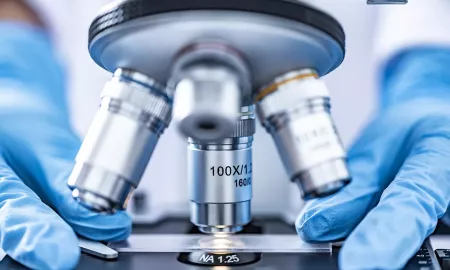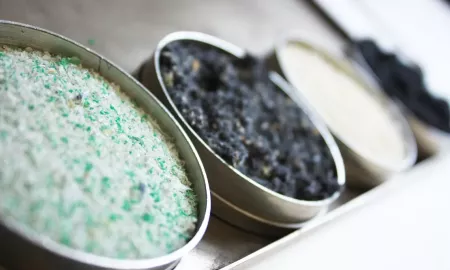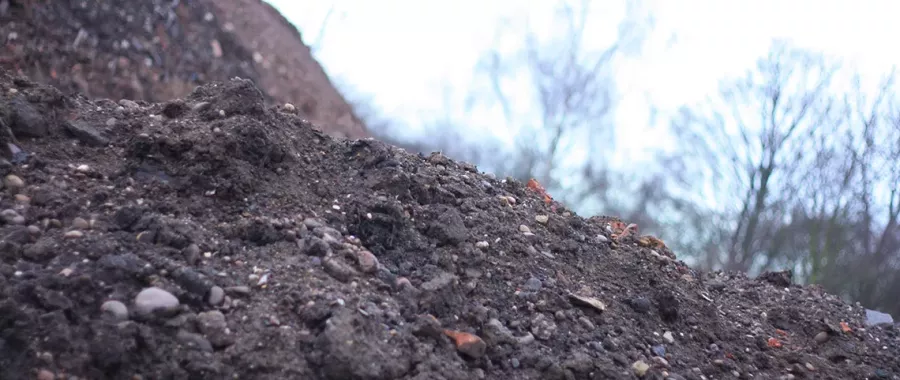Introducing the new and improved method from SOCOTEC, which has been specifically developed for the analysis of acidic herbicides in soils and waters.

Acidic herbicides
Acidic herbicides are a group of compounds which include derivatives of Phenol (Pentachlorophenol), Benzoic acid (Dicamba), Acetic acid (2,4-D, MCPA, 2,4,5-T), Propanoic acid (Dichlorprop, Fenoprop, Mecoprop) and Butanoic acid (2,4-DB, MCPB). Used mainly for broadleaf weed control in agricultural and non-agricultural applications, there are many hundreds of herbicide brands to choose from, each with a different purpose. The active ingredient used in each herbicide determines how the product works, as well as how it survives and moves through soils, into the water and around the surrounding environment.
Mecoprop
In the laboratory, one of the most commonly seen herbicides in environmental samples is Mecoprop (MCPP), which the US Environmental Protection Agency (EPA) has classified as toxicity class III – slightly toxic(1). In commercial products, this is often mixed with 2,4-D and Dicamba. It is used as a general household weed killer and as a weed-and-feed lawn treatment, as it selectively kills the broadleaf weeds while leaving the grass unaffected. Like most acidic herbicides, Mecoprop has the ability to contaminate groundwater because it is mobile in many mineral soils, and it is also one of the key indicators of pollution from municipal waste landfills (such as from the disposal of grass cuttings).
Agent Orange
Agent Orange, the herbicide widely used by the US military during the Vietnam war, contained a mixture of 2,4-D and 2,4,5-T compounds. The herbicide spraying was used to eliminate forest cover and crops that were protecting Vietnamese troops, with the controversy regarding health effects centred on the 2,4,5-T component of the herbicide.
Production of the 2,4,5-T component had also produced contamination of the Dioxin 2,3,7,8-tetrachlorodibenzo-p-dioxin compound (TCDD). TCDD is one of the most toxic chemicals known to man and is linked to reproductive and developmental problems, immune system damage, interference with hormones and even cancer. However, proper temperature control during the manufacturing of 2,4,5-T now limits this TCDD contamination.
Pentachlorophenol
Used primarily to protect wood from fungal rot and insect attack, Pentachlorophenol has been used as a wood preservative since 1936, before the European Union stopped production in 1992(2). According to the EPA(3), it is classified as extremely toxic to humans, is a probable human carcinogen and is highly toxic to aquatic organisms. As such, its use by the general public is now prohibited. Pentachlorophenol is listed in Annex A of the Persistent Organic Pollutants (POPs) under the Stockholm Convention(4), which severely limits its use to utility poles and cross-arms.
Due to its historic and prolific use as a wood treatment, reclaimed wood, which has been used within old railway sleepers, has the danger of containing Pentachlorophenol. While its reuse is regarded as being environmentally friendly, it is important to recognise where the wood has originated from and its possible contamination. The use of reclaimed wood treated with Pentachlorophenol in constructing raised vegetable beds can cause a risk of contamination within the food chain. In addition, building outdoor structures to house animals can lead them to lick and chew the wood, thereby ingesting the chemicals present.
Analytical techniques
Given the range of uses for acidic herbicides, along with their varying levels of toxicity to the environment and their ability to migrate from soils into the watercourse, it is critical for laboratories to have sensitive and robust methods of soil and water sample analysis.
GC/MS
The previous analytical technique used by SOCOTEC was Gas Chromatography Mass Spectrometry (GC/MS). To start with, the sample extract is injected into the injection port of the Gas Chromatograph (GC) at 250oC, which causes the vaporisation of the sample and the venting of the solvent. The vaporised herbicide molecules are then swept onto the front of a low polarity phase analytical column. Using an oven temperature programme from 40-300oC, the molecules are chromatographed through into the mass selective detector (MSD). To improve sensitivity, the MSD is run in Selective Ion Monitoring (SIM) mode, with the quantification based on sample response versus the response of a set of calibrations. Qualifier ions are used for analyte conformation.
To improve peak shape and volatility, sample extracts are treated with Trimethylanilinium hydroxide solution in Methanol (TMPAH), an esterification reagent used to form methyl derivatives of the acidic herbicide molecules in the injection port. The downside of using the TMPAH is that it degrades the column, which is expensive and time-consuming to replace. It is also a dangerous chemical to use, with the potential to cause skin irritation and serious damage to the eyes and organs.
To achieve sub parts per billion (0.02-0.05 µg/L) levels in ground waters, 500ml of sample is required to be extracted. There are numerous issues with this, with taking the sample being a major concern. When out on site, the larger the volume required, the heavier the sample is to carry around, the more difficult it is to store and the more expensive it is to transport to the laboratory.
Meanwhile, when in the laboratory, the larger the volume, the more time consuming it is to carry out the extraction and the greater the level of background contamination will be extracted. This higher level of background contamination can interfere with the analysis procedure and cause the instrument to become dirty quickly, which reduces its sensitivity and accuracy. The less sensitive the instrument, the more sample we have to introduce, which acts as a vicious circle. As the injection port becomes contaminated, breakdown of the herbicide molecules can start to occur, which impacts the quality of the analysis.
LC/MS/MS
Given the number of challenges posed by the GC/MS method, SOCOTEC developed a new and improved means of analysing acidic herbicides in waters and soils – the LC/MS/MS instrument.
Liquid Chromatography with Tandem Mass Spectrometry (LC/MS/MS) is a highly sensitive instrument used for the analysis of organic compounds. It is an excellent technique to use for the analysis of pharmaceuticals, pesticides and herbicides, especially for those that are thermally unstable. This is due to the fact that there are no heated ports for the introduction of the samples. Sample extracts are injected at an ambient or cooled temperature into a liquid mobile phase of LC grade water/acetic acid:Acetonitrile, which is transferred onto the InfinityLab Poroshell narrow bore LC column. This separates the different acidic herbicide molecules by solvent gradient before introducing them into the mass spectrometer.
The Shimadzu LCMS-8050 mass spectrometer monitors the produced ions via a technique of multiple reaction mode (MRM). This is a highly sensitive and selective technique which, as well as having a much higher sensitivity than the GC/MS, also removes background contamination, offering a more accurate result and lessening the chance of false positive results.
Due to this increased sensitivity, only 10ml of water sample is required to be extracted to give the same detection limits. For soil samples, a 20 times dilution of the original extract is prepared to dilute out any interferences, which still results in a comfortable 0.1mg/kg detection limit. As the MRM data is highly selective, it is not required for all compounds to be resolved (as shown in figure 1), and as a result, the instrument runtime can be decreased. Accordingly, the method has been reduced from a 20-minute injection time for the GC/MS method down to 9.5 minutes for the LC/MS/MS, which means that twice the amount of samples are able to be analysed in a given day.
Using a reduced sample volume to produce the extract and having a highly sensitive detector to achieve the same detection limits has resulted in less background contamination being injected. This keeps the instrument system cleaner, resulting in less downtime and instrument maintenance.
Extraction
Waters
10ml of water sample is acidified and spiked with a cocktail of six deuterated/13C labelled acidic herbicides used as internal/recovery standards. The sample is passed through a Solid Phase Extraction (SPE) tube containing a hydroxylated polystyrene-divinyl benzene copolymer, which is a highly retentive non-polar phase for the extraction of polar compounds. The acidic herbicide compounds that have been retained on the tube are eluted with solvent and analysed by LC/MS/MS. Up to 20 samples can be extracted at once, making it a cost-effective extraction technique.
Soils
One gram of soil is extracted into acidified methanol spiked with the cocktail of six deuterated/13C labelled acidic herbicides. This ultrasound-assisted extraction technique provides a fast kinetic solid-liquid extraction with a good extraction yield. By reducing the operating temperature, it allows for a better extraction of thermally unstable compounds. The extract prior to dilution is subjected to a dispersive SPE clean-up using a mixture of magnesium sulphate (MgSO4) and PSA (primary and secondary amine). The magnesium sulphate is used to remove excess water and the PSA removes sugars, fatty acids, organic acids and anthocyanine pigments.
Customer gains
This new and improved LC/MS/MS analysis has given clients a faster, more robust method, meaning less instrument downtime and guaranteeing greater on-time delivery. By reducing water sample volumes by 50 times, easier sampling, transportation and storage is ensured. What’s more, due to the removal of the derivatising agent, less toxic chemicals are used, which is safer for the environment and reduces a laboratory’s carbon footprint.
Operating from state-of-the-art UKAS accredited testing laboratories No.1252, SOCOTEC’s Environmental Chemistry team specialises in the testing and analysis of soils, waters, leachates, effluents, industrial wastes, marine waters and sediments.
References
Want to find out more about how SOCOTEC can support your organisation with environmental testing?

You might also like







Add new comment